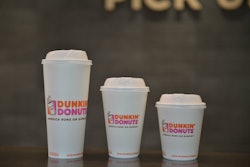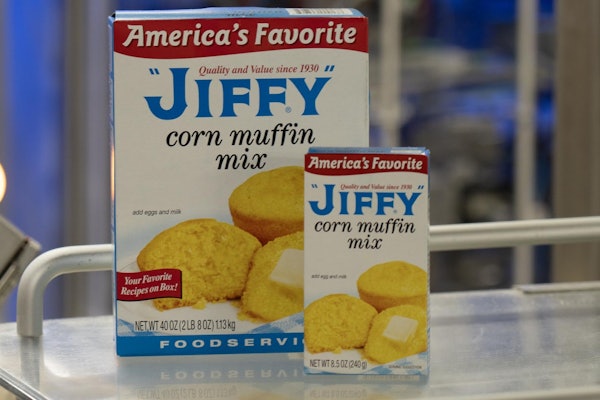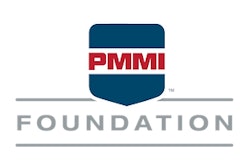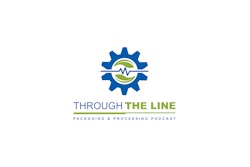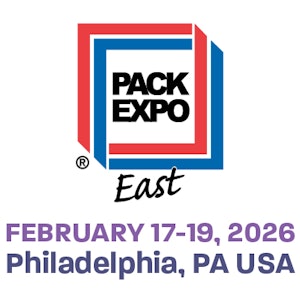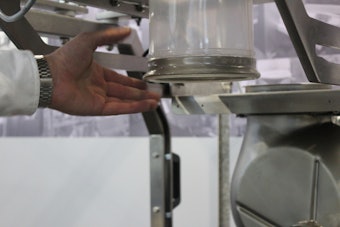Rigid plastic packaging (hereafter, plastic packaging) has received ardent criticism in the era of sustainability. After all, it’s made from petroleum and can endure for centuries, whether in landfills, as litter, or as pollution in waterways. Despite that profile, plastic packaging continues to expand its applications, both in variety and in volume. As for the latter, no better example need be cited than the PET water bottle, with its yearly worldwide production in the high billions. It’s understandable that there are those who regard sustainability and plastic packaging as dueling trends. However, the answer to a win-win co-existence resides in recycling.
Which is not to say that recycling is new. To the contrary, it’s one of sustainability’s ‘Three Rs,’ along with Reuse and Reduce. What is new is the continuing growth and development of the infrastructure that supports plastic recycling.
At this juncture, it would be helpful to digress for a few facts. First, packaging is far from being the biggest user of plastic. Yet plastic packaging is singled out disproportionately as an environmental problem. That’s because plastic packaging (as does packaging in general) later becomes a post-consumer disposal issue──in a word, garbage. Its in-your-face presence impossible to ignore. Second, there always have been money-making opportunities in garbage. For example, someone has to haul it. Third, recycling is the alchemy that can turn discarded plastic packaging into profits.
Returning to the topic, the referenced infrastructure is composed of individual households, communities, municipalities, haulers, material recovery facilities, production facilities that use recycled plastic packaging, and consumers of products made from recycled plastic packaging.
That such an infrastructure presently is supported by today’s modest recycling rates bespeaks the astronomical tonnage plastic packaging comprises. It’s estimated that 65% to 70% ends up in landfills. A related estimate is that only 25% of plastic beverage bottles are recycled.
Those rates, nonetheless, have justified capital investments, particularly at material recovery facilities. Not long ago, those facilities were characterized by high levels of manual labor and were barely mechanized beyond conveyors. Now, there are facilities with technological upgrades. For example, sorting is performed using various types of optics that can distinguish among plastics by type and even by color. It’s a capability that reduces the problem of one type of plastic contaminating the stream of another type of plastic.
After undergoing sorting, plastic packaging (such as bottles) is flattened and then compressed into large bales weighing upwards of a thousand pounds, thereby providing efficiencies in handling, storage, and transportation. The more homogenous the bales, the more useful they are for specific downstream operations that are performed by other members of the supply chain.
A company that receives the bales uses equipment to break them apart, and with the use of magnets, removes any metal that survived earlier sorting. Different equipment is used to wash the plastic, during which not only are contaminants removed, but labels as well. Next, the plastic packaging is chopped into flakes. The flakes are melted, extruded, cooled, and chopped into pellets. The pellets are filled into intermediate bulk containers (IBCs) and shipped to companies that make products from the recycled plastic.
The purpose of the preceding paragraphs is to provide an overview of plastic packaging recycling, rather than to list (let alone to describe) every involved facet. It’s all to make this point: recycled plastic packaging is a raw material, as much so as any other material traditionally regarded in those terms.
As a raw material, recycled plastic packaging has environmental credentials worthy of mention. As conceded earlier in this article, plastic is a derivative of petroleum; however, recycled plastic consumes no additional petroleum. Given that plastic has a lifespan that’s measured in centuries, theoretically it can be recycled countless times, making the petroleum consumption-to-uses ratio miniscule. Additionally, the aforementioned can be had without sacrifice of functional properties. This is distinct from a material like paper, which loses fiber length and strength from repeated recycling. And as for concerns about the finite nature of petroleum and landfills, plastic recycling conserves both.
It’s often asserted that there’s enough food production to eliminate hunger and that the problem lies in getting that production to the hungry and starving. By analogy, it’s a valid assertion that there’s enough plastic already in existence to supply full-scale recycling and that the problem lies in directing that plastic into the recycling streams.
There are various initiatives and incentives operating throughout society, meant to foster increased levels of plastic recycling. Combating the set-in-my-ways mentality held by some older people, there are efforts directed to the young, starting as early as preschool. That’s all to the good, however, are the users of plastic packaging, especially CPGs companies, doing enough to promote plastic recycling?
There are CPGs companies that leverage the consumer-pleasing properties of plastic packaging, yet, make public pronouncements that are defensive, almost apologetic. On their websites, for example, they emphasize what they’ve done with source reduction (lightweighting), typically equating it to fewer hauls, fuel savings, less air pollution, etc. On principle, there’s nothing wrong with that approach. However, taken alone, consumers might perceive the message to be that plastic is an evil, hence the company is using as little as possible.
Source reduction has practical limitations. After a certain point, performance is compromised, not only for the consumer but also for in-plant operations. CPGs companies, in their public pronouncements, are better served by promoting recycling──in addition to their source reduction claims.
Without plastic, packaging would contribute far less to the mass-production, mass-distribution, and mass-consumption of products characteristic of a modern society. One can say, without disparaging bioplastics or their ilk, that no other material completely replicates the benefits of petroleum-derived plastic.
Technological advancements will expand the plastic recycling infrastructure, along with making it more efficient and cost-effective. Technological advancements also will expand the uses for recycled plastic. Packaging is front-and-center to it all. A zero-waste society is a desirable ideal. However, it won’t be achieved—can’t be achieved—without affording a due role to recycling.
Sterling Anthony, CPP, is a consultant specializing in packaging, marketing, logistics, and human-factors. His contact information: 100 Renaissance Center, Box-176, Detroit, MI 48243; telephone 313-531-1875; [email protected]; www.pkgconsultant.com



